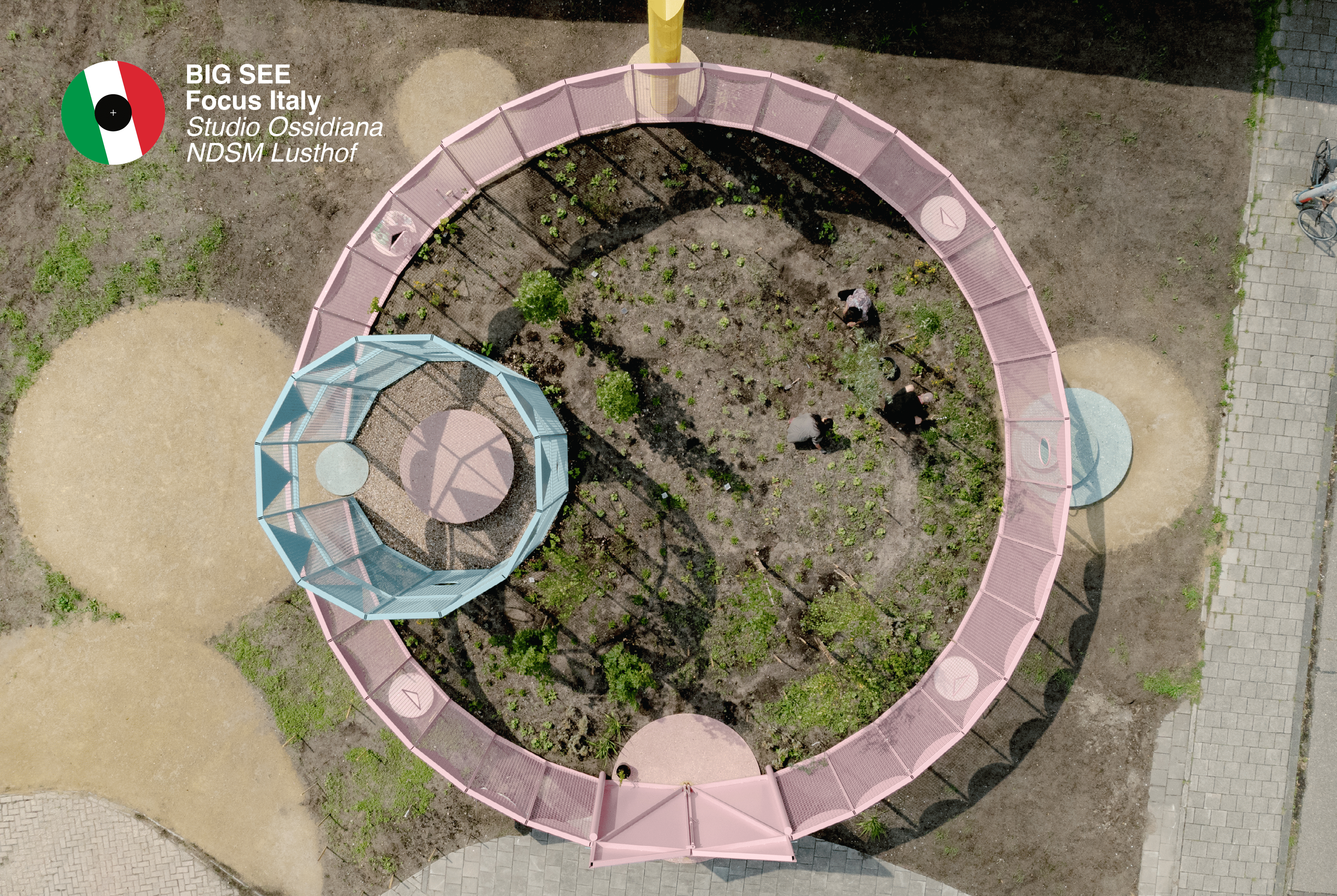
About NDSM Lusthof
Gardening is an earthly endeavour, where choices are made daily between keeping and removing, responding to the weather, soil conditions, the seasons, as well as one’s desires, and capacity to commit hours of work. The garden is also a metaphor, an embodied escape which, like the carpet, can give materiality to ideas of paradise. Saint Francis is said to have had his garden closed on three sides, with one left open to the world, to the unknowns outside of it. Ottoman gardens cherished asymmetries, collecting an ecumenical variety of medicinal and ornamental plants from different parts of the world, perhaps a reflection of their nomadic history. The Dutch Lusthoven, beautiful pleasure gardens which flourished in the golden age, were often accessible only by boat, an exclusive fragment of the world where a limited perfection would reign. Every garden is both a map, as it proposes an idea of the world, and it is a living fragment of the world itself, where life and death, composition and decomposition, unfold.
We imagined a garden for NDSM to be a place of action, of work, as well as one of experimentation and leisure: a contemporary Lusthof born on the banks of Amsterdam’s port, open to people, plants, and animals from the world. Within the former shipyards, we imagined it as a port made for soil, plants, and minerals, a circular world-observatory where to stay, to look into, and from which to observe the world around it: a sequence of openings frame the cardinal points, as well as direct the gaze towards the axis of dawn and dusk during the summer and winter solstices, marking the passing of the seasons.

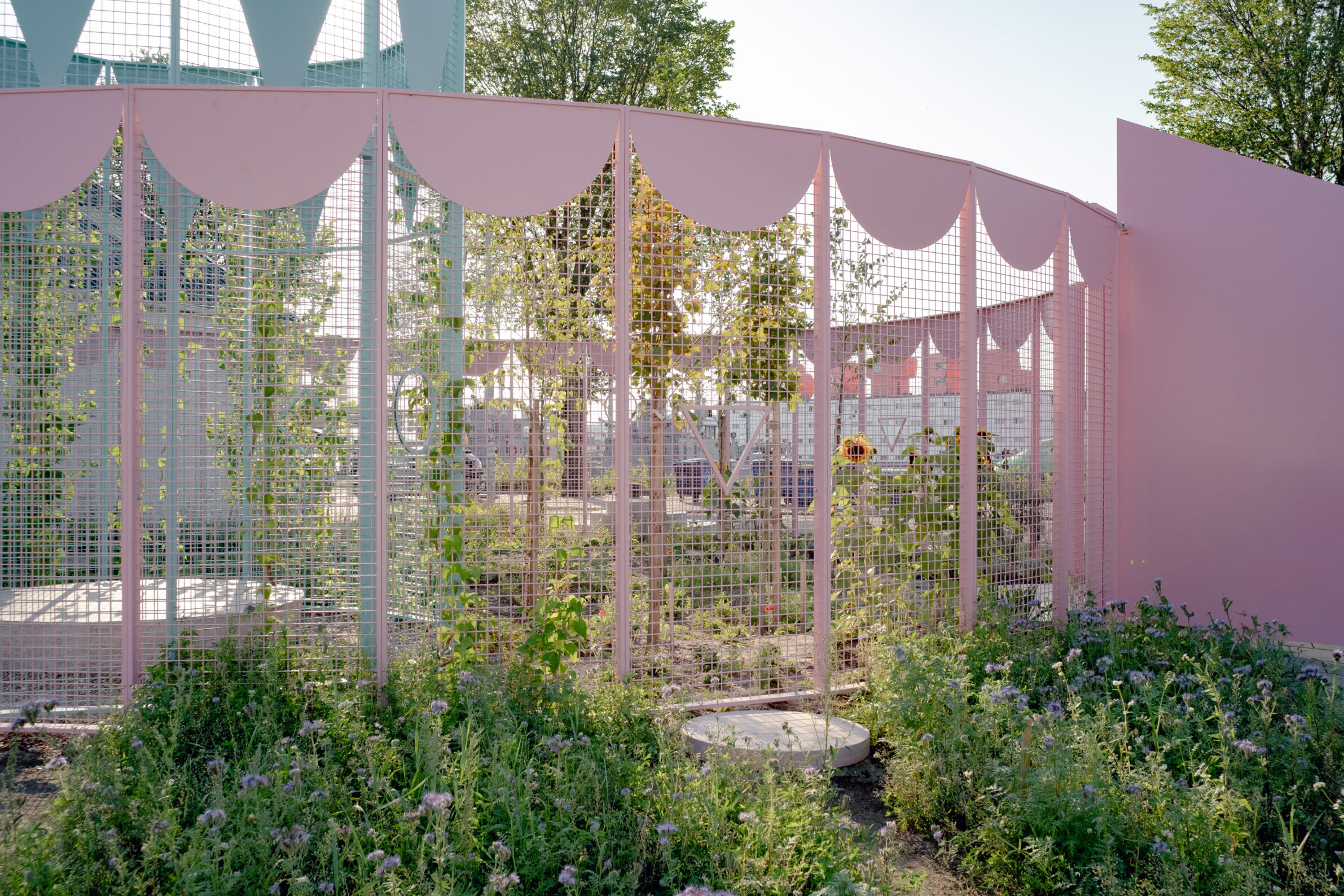
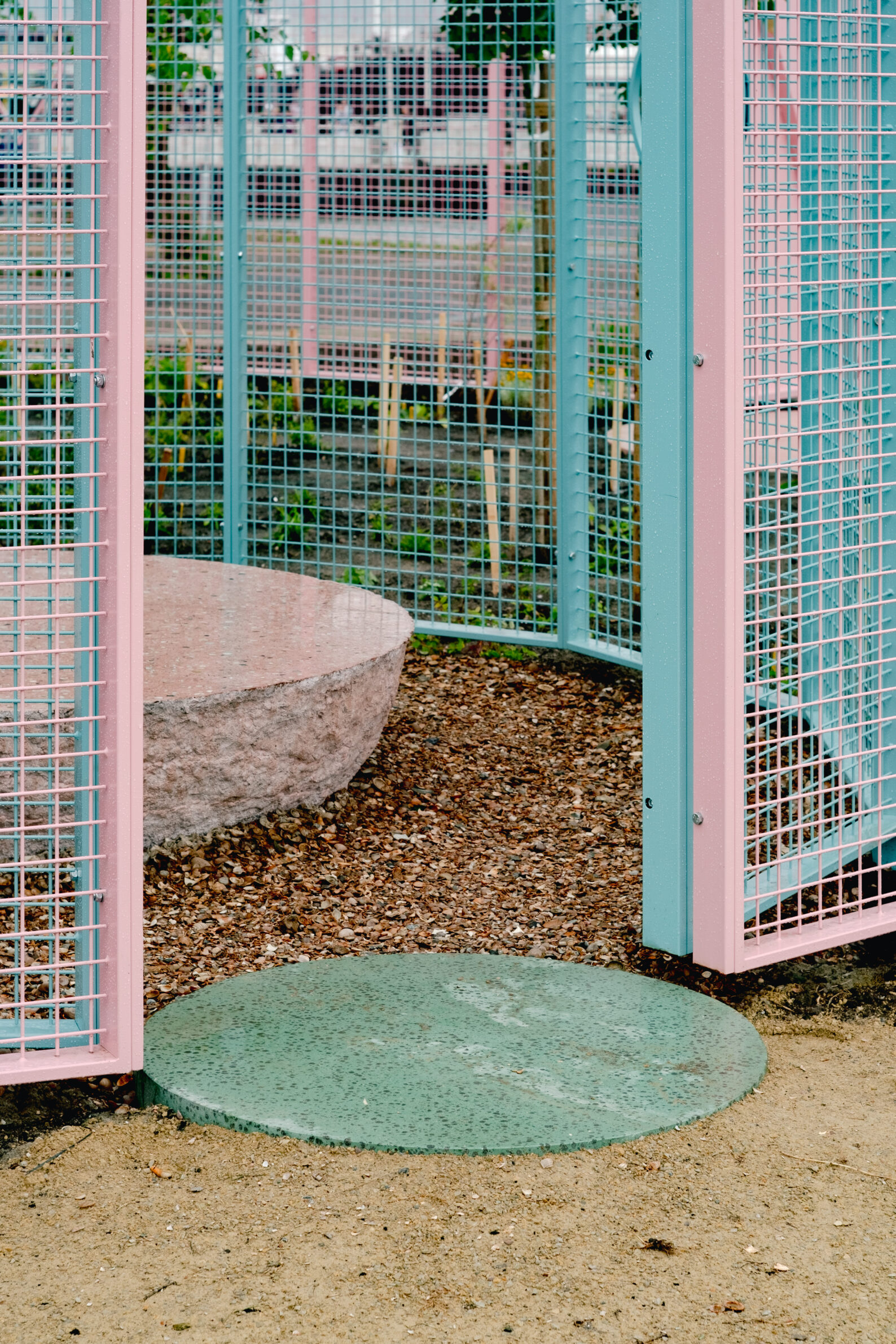
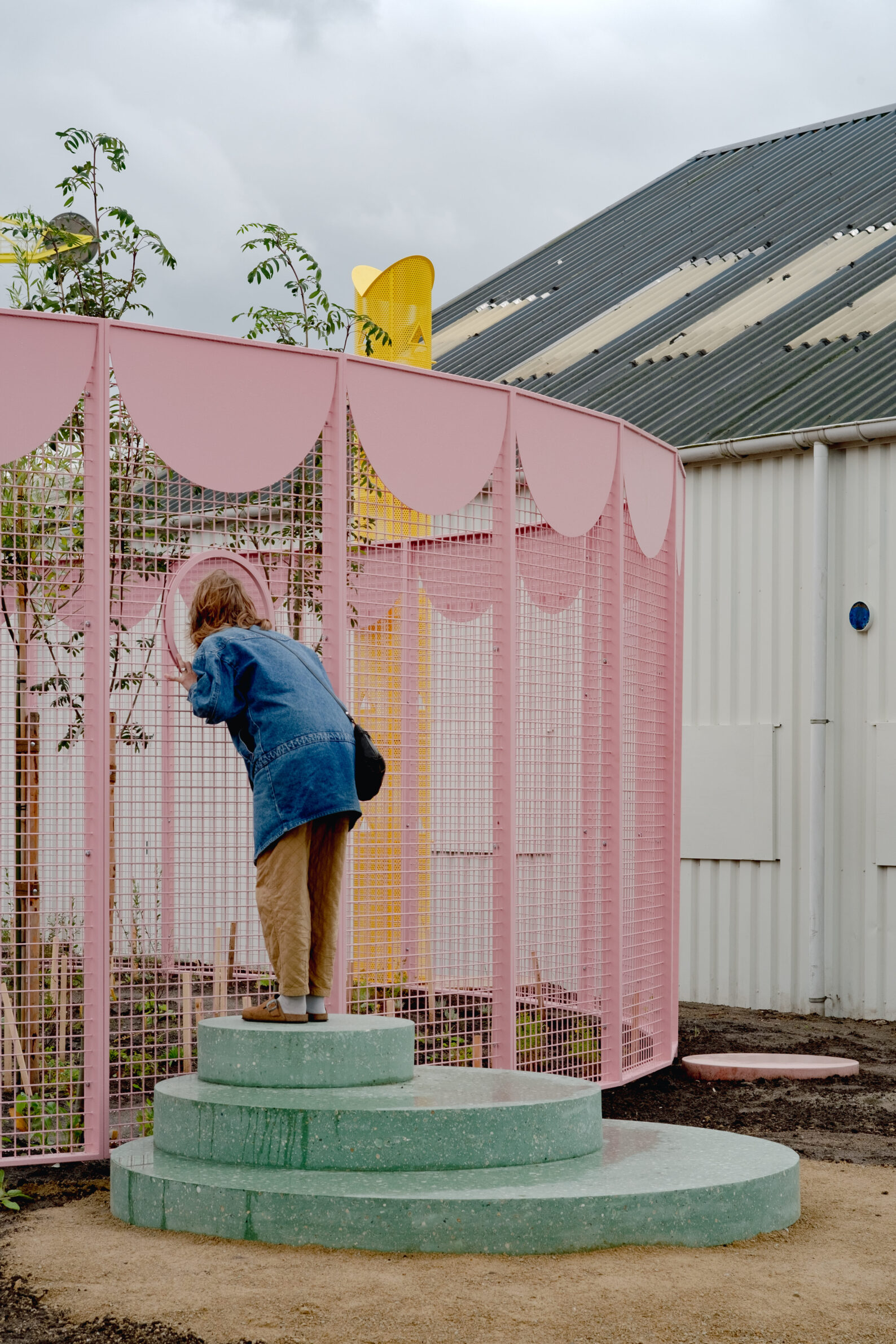
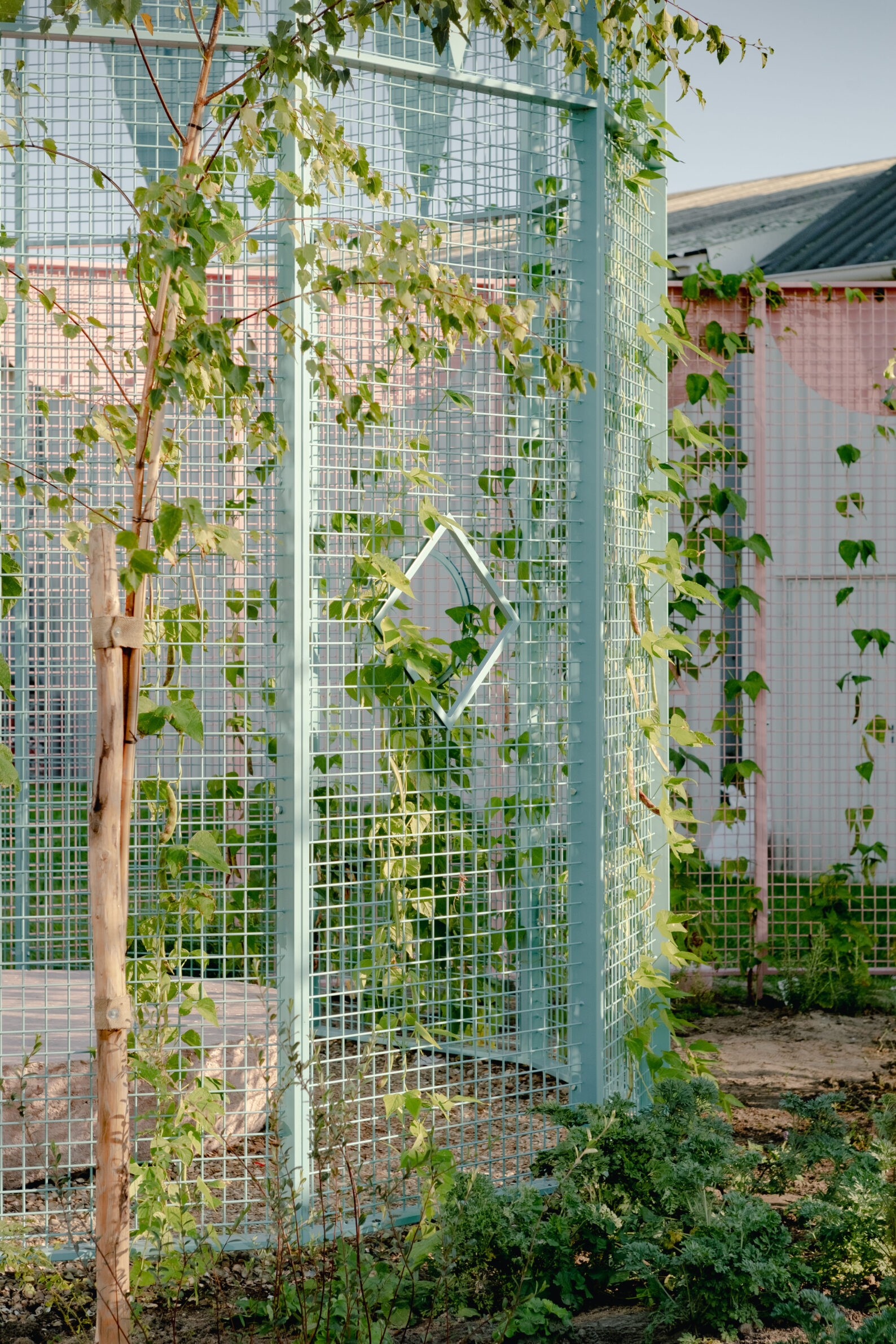

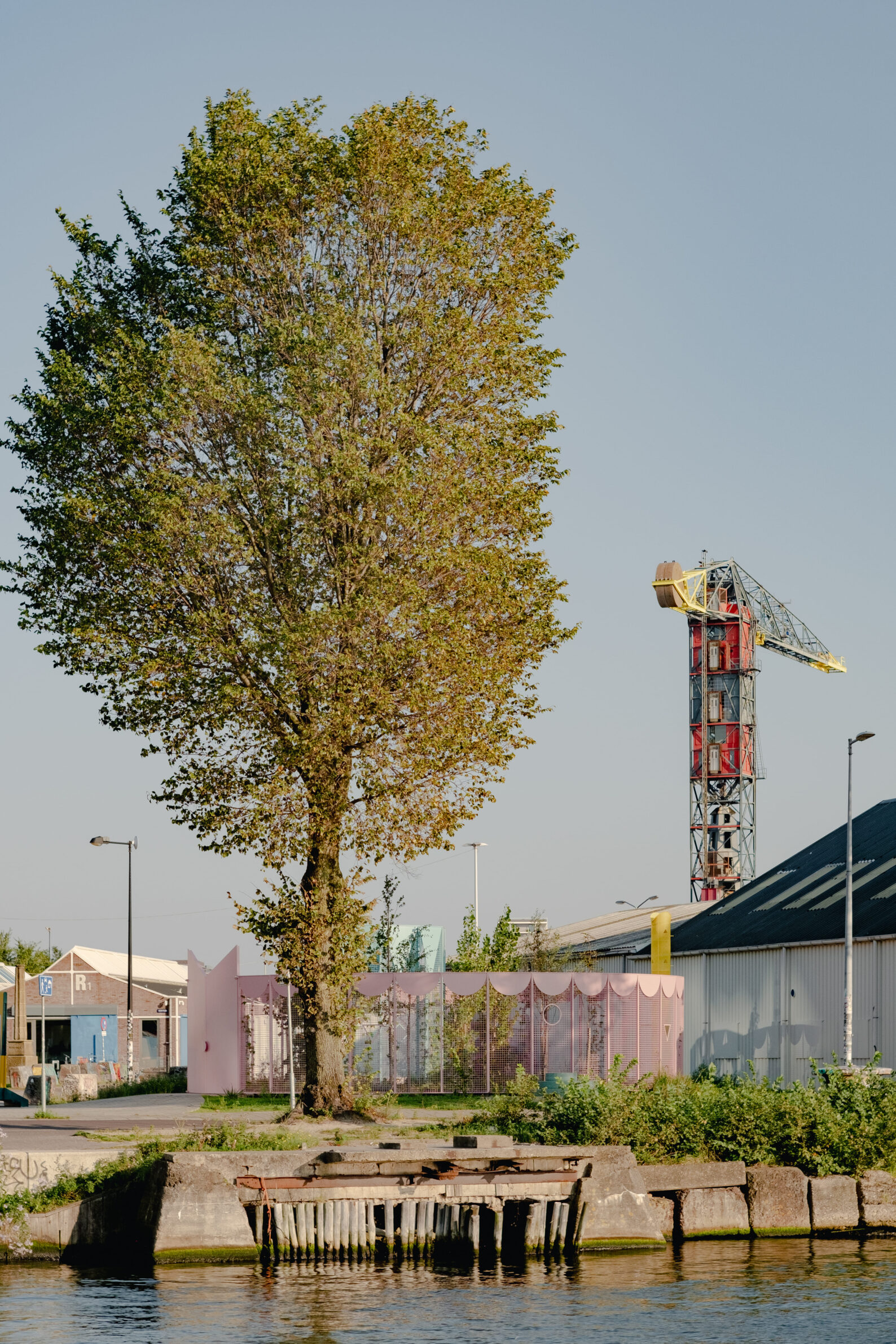
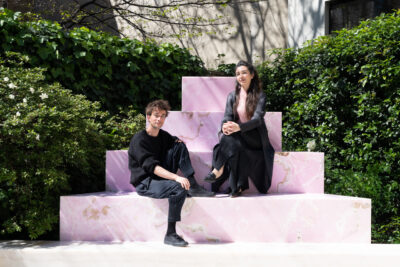
Giovanni Bellotti
& Alessandra Covini
Project
NDSM Lusthof
Studio:
Studio Ossidiana
Architects:
Giovanni Bellotti
& Alessandra Covini
Year of Completion:
2024
Location:
Amsterdam, Netherlands
Website:
www.studio-ossidiana.com
Instagram:
@studio_ossidiana
Email:
alessandra@studio-ossidiana.com
giovanni@studio-ossidiana.com
Portrait Photography:
Camilla Cappelli
Project Photography:
Alex Filz
Edited by:
Tanja Završki
Powered by

About the Project
Gardening is an earthly endeavour, where choices are made daily between keeping and removing, responding to the weather, soil conditions, the seasons, as well as one’s desires, and capacity to commit hours of work. The garden is also a metaphor, an embodied escape which, like the carpet, can give materiality to ideas of paradise. Saint Francis is said to have had his garden closed on three sides, with one left open to the world, to the unknowns outside of it. Ottoman gardens cherished asymmetries, collecting an ecumenical variety of medicinal and ornamental plants from different parts of the world, perhaps a reflection of their nomadic history. The Dutch Lusthoven, beautiful pleasure gardens which flourished in the golden age, were often accessible only by boat, an exclusive fragment of the world where a limited perfection would reign. Every garden is both a map, as it proposes an idea of the world, and it is a living fragment of the world itself, where life and death, composition and decomposition, unfold.
We imagined a garden for NDSM to be a place of action, of work, as well as one of experimentation and leisure: a contemporary Lusthof born on the banks of Amsterdam’s port, open to people, plants, and animals from the world. Within the former shipyards, we imagined it as a port made for soil, plants, and minerals, a circular world-observatory where to stay, to look into, and from which to observe the world around it: a sequence of openings frame the cardinal points, as well as direct the gaze towards the axis of dawn and dusk during the summer and winter solstices, marking the passing of the seasons.









